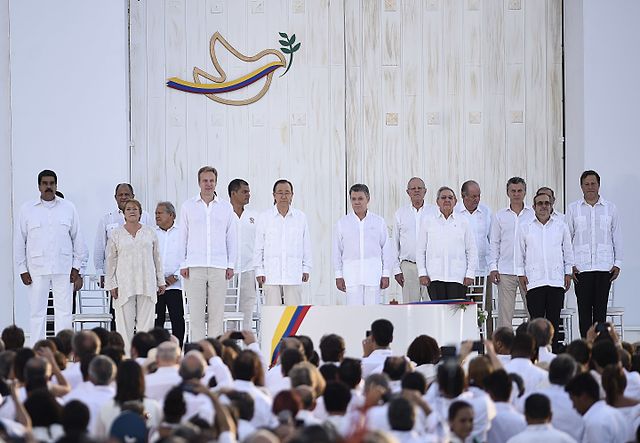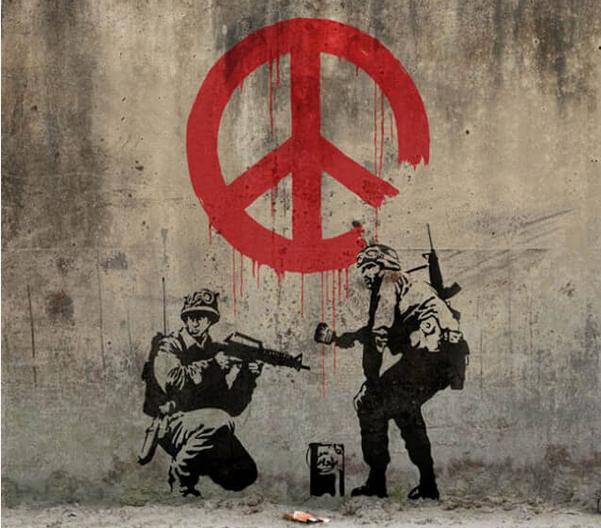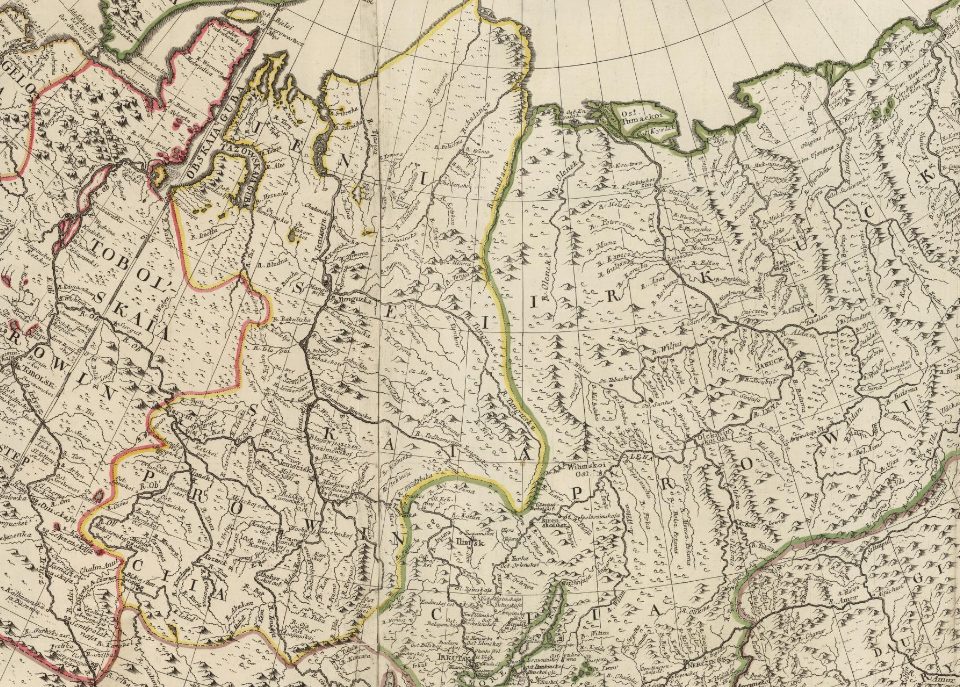

Researchers and PhD Candidates Working on Armed Conflicts
16 April 2023
Armed Conflict: the Growing Impact of International Law
16 April 2023‘In the grand bargain struck between the apartheid government and the A.N.C., headed by Nelson Mandela, a transfer of power was carried out peacefully, disproving predictions of civil war and earning Mr. Mandela accolades as a visionary peacemaker. But the deal was reached on what many South Africans today consider Pyrrhic terms: The black majority was allowed to control politics, but much of the country’s economic resources, including land, has remained in the hands of white South Africans and a small group of other elites.’ (Onishi N, Gebrekidan S. 2018. “They eat money”: how Mandela’s political heirs grow rich off corruption. New York Times, April 16.)
‘There is nothing that we are negotiating (in the peace process) that should worry either foreign or local investors… We are not negotiating our political institutions, our economic model or private property. Nobody will be expropriated.’ (“ Santos dice a inversionistas que Colombia no es “castrochavista.” El Colombiano, Sept. 22. 2014)
These two quotes lay bare the tension unveiled by peace processes around the world and raise a fundamental question: To what extent should the existent distribution of wealth be part of a transitional justice negotiation? And, if this issue is, as most often, left out of the table, what are the consequences that may follow?
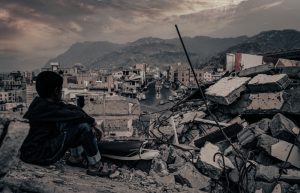
Taiz Yemen – 22 Aug 2016 : A child from Taiz City sits on the ruins of his ruined home because of the war on city-Yemen. © 2003-2023 Shutterstock
In this article, Helena Alviar García, full professor at the Law School, look into this tension, starting out by analysing reparations, providing the background for the conversation regarding restitution, the specific concept that frames issues regarding property and transitional justice. Finally, she will outline the critiques of the ways in which restitutions have been structured.
A starting point in order to examine property and transitional justice consists of analysing the desire shared by most members of a society to overcome conflict for compensating victims of the harms suffered during a war. It encapsulates the objectives of achieving justice for those who have suffered harm in the past and are aimed at reaching reconciliation while at the same rebuilding a nation after war. Reparations can take the form of monetary indemnification, property restitution, but they may also go beyond and include symbolic acts of forgiveness or monuments for victims.
Reparations: An Extensive Concept
Even though reparations were initially linked to war between nations, the scope has been greatly broadened to include a wide variety of damages: human rights violations during internal conflict; harms produced by dictatorship or authoritarian regimes, European colonialism, US imperialism or the legacy of slavery. There are different types of reparations according to their form and distributional goals. In terms of form, reparations can be symbolic or material and their distribution can be individual or collective. Symbolic reparations can take the form of statutes, changing the name of streets and public or private acts of apology. Material reparations may take the form of money, pensions, access to resources such as land, housing, health or education and the return of abandoned or lost property.
Reparations: Contested Practices
Reparations have been criticised by right-wing supporters as well as left-wing supporters. For those on the right, claims for reparations could lead to contest existing property rights, which would be translated into a lack of faith in a legal system becoming less steady and sure. Many have also signalled the impossibility of poor countries to have the necessary resources to adequately address the devastation of war. On the other side of the political spectrum, academics, and activists on the left critique biases in the process through which victims are selected; the arbitrariness of dates and the meager distributive effect that reparations have.
Restitution: a Return to the Previous Time
Restitution has in its origins the ideal of answering the plights of refugees displaced by war or internal conflict. A key moment was the 1995 General Framework Agreement for Peace (GFAP) which put an end to the conflict in Bosnia. This agreement gave refugees the possibility to return and reacquire the property they had abandoned. To date, the international legal frame includes the 1998 Guiding Principles on Internal Displacement, and the 2005 United Nations Principles on Housing and Property Restitutions for Refugees and Displaced Persons, known as the Pinheiro principles, both established under the aegis of the UNHCR. These provisions privilege the rights of the displaced and envisions returning to the property distribution that existed before the conflict.

Syria – October 2017: Syrian refugees in the Syrian border region are struggling to survive in cold weather conditions. © 2003-2023 Shutterstock
Restitution goes beyond the aim of solely addressing the harms of war; rather its goal is to return things (as much as possible) to the condition they were before conflict ensued. This return to previous conditions includes ownership and, in some cases, the call for diverse ethnic cohabitation. The arguments in favour of restitution are related to repairing the illegitimate taking of property (as for example during colonialism); to enable the right to return; to remedy dispossession and the displacement of people product of internal or external conflict and to include remedies (such as restitution or the building of monuments) beyond punishing perpetrators through criminal law.
Along with economic, social, and political justifications in favour of restitution, there are two right-centred arguments. The first one links restitution to rights granted to refugees to go back to the countries or regions they were expelled from. On the other hand, the possibility to return is a preferred corrective measure when the right to the enjoyment of one’s own property or the right to adequate housing has been curtailed during times of conflict. Restitution is also a way to move away from centring transitional justice upon criminal accountability.
The last twenty years have seen restitution efforts in many countries that have established different institutional settings. There are countries like Iraq and Kosovo where an ad hoc land claim commission is in charge of solving specific land disputes. Other countries strengthen the existing judicial system in order to solve claims over property, Colombia would be an example of this path. Still in other countries, conflicts are solved through customary law.
Restitution: A Limited Impact
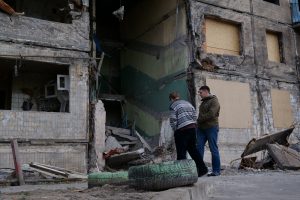
KYIV, UKRAINE, APRIL 15, 2022: After bombing. Russian aggression. War in Ukraine. People near dwelling house destroyed by russian shell on March 14, 2022. 2003-2023 Shutterstock
Restitution can be criticised for many reasons. These include issues of how ambitious it may be and what are its concrete results. In fact, privileging the rights of those displaced may be controversial, as the process of giving back property can raise tensions between those who want to return and those currently occupying it in good faith. Whether it is an ambitious form of restitution aimed at redistributing property or more modest options based on the right to return, restitution has faced enormous challenges in terms of its delivery through adequate institutions.
Moreover, restitution is only one part of reparation. In many cases, it should be accompanied by other measures such as resources to rebuild houses; make land more productive; access to education, health, and social services; improvement in infrastructure and communications along with technical agricultural assistance. In addition, countries that have emphasised restitution over monetary compensation such as Bosnia did not have the desired results as many beneficiaries of restitution chose compensation because they did not want to return. In fact, many have argued that when restitution is centred on returning things as they were before conflict, it is not dealing with the root causes of inequality which have triggered the conflict in the first place. Others have critiqued restitution efforts because they have not adequately returned property to vulnerable groups such as women, the indigenous population, or Afro-descendants, and that many times national economic development plans based on export-led growth and agribusiness diminish the scope and breadth of restitution initiatives.
These various criticisms clearly show to what extent the issue of reparation and restitution is linked to those of the distribution of wealth and property. In providing an overview of the issues central to reparation, restitution and redistribution of property in the field of transitional justice, it illustrates the ways to grapple with the diverse terms along with the difficulties and critiques the concepts of reparation and restitution have faced.
Helena Alviar Garcia, Professor at the Law School, devotes her research to the links between law and development. Her interests include property law, social and economic rights, feminism and transitional justice. She is also co-founder of Dejusticia, one of the leading human rights NGOs in the Global South. She is also a member of the Institute for Global Law and Policy (IGLP) at Harvard Law School.

